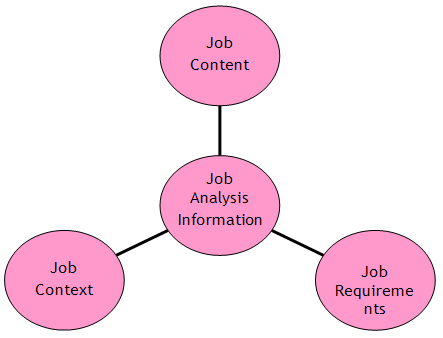Advantages and Disadvantages of Job Analysis
April 3, 2025
 Advantages and Disadvantages of Job Analysis
Advantages and Disadvantages of Job Analysis
Though job analysis plays a vital role in all other human related activities but every process that has human interventions also suffers from some limitations. The process of job analysis also has its own constraints. So, let us discuss the advantages and disadvantages of job analysis process at length. Advantages of Job Analysis Provides First…
 Approaches to Job Design
Approaches to Job Design
Job design is the next step after job analysis that aims at outlining, and organizing tasks and responsibilities associated with a certain job. It integrates job responsibilities and qualifications or skills that are required to perform the same. There are various methods or approaches to do this. The important ones are discussed below Human Approach…
 Benefits of Job Rotation
Benefits of Job Rotation
Job rotation is considered as an effective tool for successful implementation of HR strategy. It is about settling employees at the right place where they can deliver the maximum results. In today’s highly competitive world, this can be proved as the best strategy to find the immediate replacement of a high-worth employee from within the…
Gathering job-related information involves lots of efforts and time. The process may become cumbersome if the main objective of it is not known. Any information can be gathered and recorded but may be hazardous for health and finances of an organization if it is not known what is required and why.
Before starting to conduct a job analysis process, it is very necessary to decide what type of content or information is to be collected and why. The purpose of this process may range from uncovering hidden dangers to the organization or creating a right job-person fit, establishing effective hiring practices, analyzing training needs, evaluating a job, analyzing the performance of an employee, setting organizational standards and so on. Each one of these objectives requires different type of information or content.
While gathering job-related content, a job analyst or the dedicated person should know the purpose of the action and try to collect data as accurate as possible. Though the data collected is later on divided in to two sets - job description and job specification but the information falls in three different categories during the process of analyzing a specific job - job content, job context and job requirements.

Fig 1.1 Categorization of Job Analysis Information
The content depends upon the type of job in a particular division or department. For example, job content of a factory-line worker would be entirely different from that of a marketing executive or HR personnel.
Well like job content, data collected under this category are also subject to change according to the type of job in a specific division or department.
For different jobs, the parameters would be different. They depend upon the type of job, designation, compensation grade and responsibilities and risks involved in a job.
Your email address will not be published. Required fields are marked *